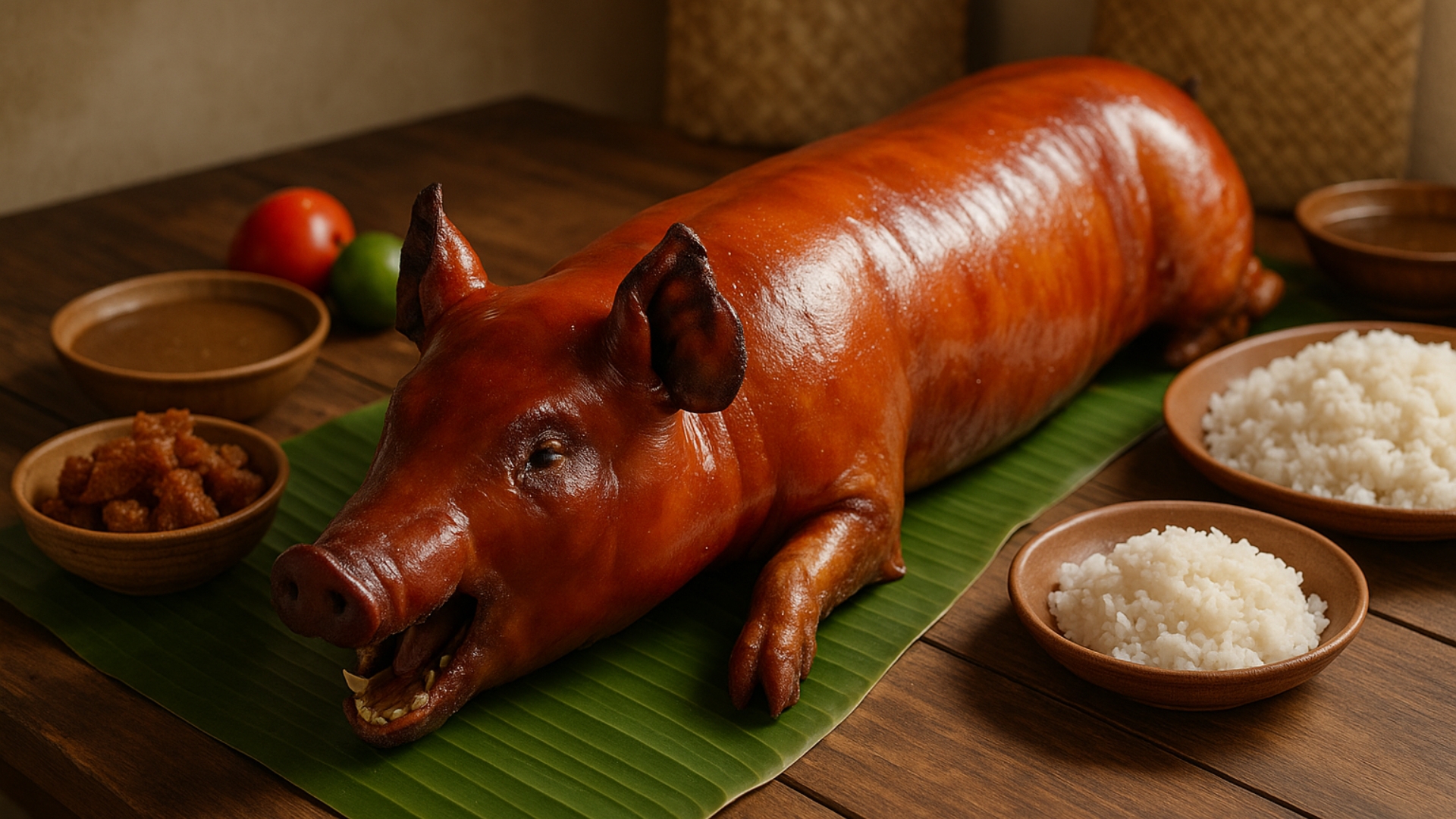
There are party dishes, and then there’s Lechon. It doesn’t sit quietly on the table. It takes center stage. It’s crispy, shiny, and dramatically golden. The kind of dish that gets its own photo shoot before anyone is allowed to eat.
Lechon is more than just roasted pork. It’s tradition. It’s celebration. It’s that one thing everyone secretly judges at weddings, fiestas, and Christmas parties. If the skin doesn’t crack when tapped, sorry. It’s not the real deal.
So where did this larger-than-life dish come from? And why do Filipinos obsess over it like it’s a national treasure?
A Bite of History
The word Lechon comes from the Spanish term lechón, which originally referred to a suckling pig. Spain brought the concept to the Philippines during the colonial era, but like with most things, Filipinos made it their own. Bigger, bolder, and crispier.
Over time, Lechon became a symbol of celebration. In fact, it’s hard to imagine a major Filipino gathering without it. Birthdays, fiestas, weddings, homecomings, graduations, reunions, even barangay pageants. If it’s a big deal, there’s Lechon.
Where Did It Come From?
Every region in the Philippines has Lechon. But if we’re talking fame, two places come to mind: Cebu and Batangas.
- Cebu is known for its Lechon Cebu, a boneless, heavily seasoned version stuffed with lemongrass, garlic, onions, and other herbs. No sauce needed. The skin is glassy and the meat is salty and fragrant.
- Batangas has its own take, usually simpler, but just as satisfying. The flavor is cleaner, often served with liver sauce on the side. More on that later.
Today, Lechon has become a national dish. No matter where you are in the Philippines, there’s a local version roasting somewhere over hot coals and turning slowly, patiently, deliciously.
What Goes Into a Good Lechon?
Here’s what makes Lechon legendary:
- A whole pig, usually marinated or rubbed with salt and spices
- Stuffing, often with lemongrass, garlic, onions, and peppercorns
- Hours of slow roasting over an open fire, rotated by hand or machine
- Crispy skin, the most fought-over part at the party
The skin has to crack when you bite it. Not just crunch. Crack. The meat should be tender, juicy, and flavorful without any sauce. Though, let’s be honest, the sauce debate is real.
Popular Variations You Should Try
1. Lechon Cebu
The legend. Stuffed with herbs and roasted until the skin shines. No sauce needed. Best eaten standing up with your hands and a plate of rice.
2. Luzon-Style Lechon
This one keeps things simpler, focusing on clean flavors. Often paired with liver sauce, also called sarsa. Some people even dip it in vinegar with garlic and chili. Respect.
3. Lechon de Leche
A younger, smaller pig. The meat is more tender and the skin is thinner and extra crispy. It’s also cuter. But still very much eaten.
4. Lechon Kawali
Not roasted, but deep-fried. Chopped pork belly boiled then fried until golden. It’s like the crispy little cousin of the main event.
5. Lechon Paksiw
A genius solution to leftovers. Lechon bits are simmered in vinegar, sugar, liver sauce, and garlic. It turns into a sweet-savory stew that might even be better the next day.
Why Do We Love It So Much?
Because it’s a showstopper, it smells like celebration, it makes everybody stop and stare, and nothing else tastes quite like it.
Lechon is food and performance. It brings people together, sparks conversation, and guarantees that everyone leaves full and slightly more in love with pork.
Fun Facts for Your Next Lechon Feast
- Anthony Bourdain called Cebu’s Lechon the best pig ever. We agreed instantly.
- In some provinces, the roasting process is still done by hand. That’s hours of turning over an open flame.
- In the Philippines, Lechon is such a big deal that entire businesses exist just to roast pigs for your events. It’s a whole industry.
- There’s even Lechon-themed festivals, like the Parada ng Lechon in Batangas, where dressed-up pigs are paraded before being eaten. Yes, that’s real.
What’s a Party Without Lechon?
It’s more than just roasted pork. Lechon is a symbol of joy, abundance, and togetherness. It’s what you save up for. What you line up for. What you brag about after every successful event. So whether you’re team liver sauce, team no sauce, or team vinegar all the way, one thing’s for sure. When Lechon is served, you show up hungry.
Because this is not just food. This is tradition, roasted to perfection.
